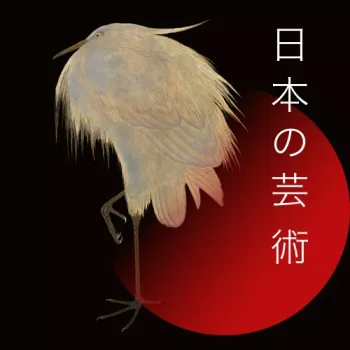Cabinet with shelves (shodana) 1850-97
Wood, black and gold lacquer, silver fittings inlaid with gold | 70.6 x 75.5 x 31.0 cm (whole object) | RCIN 26044

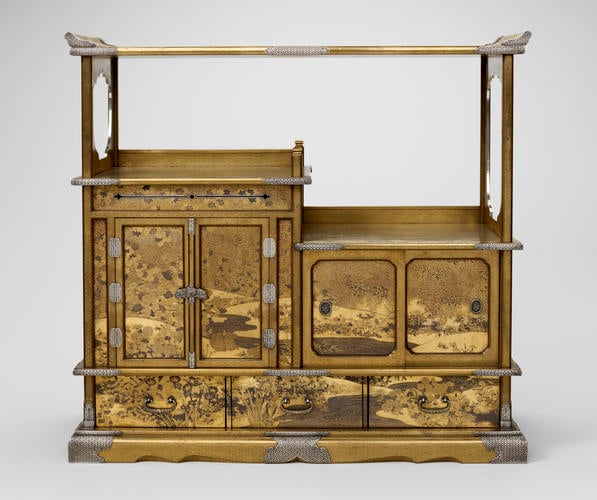


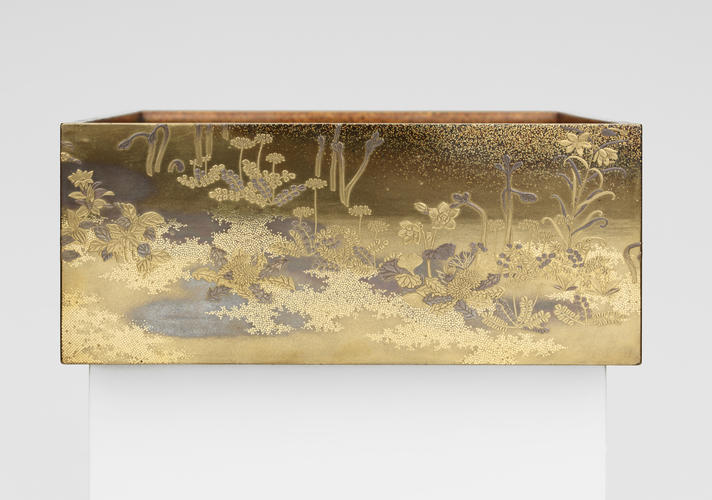

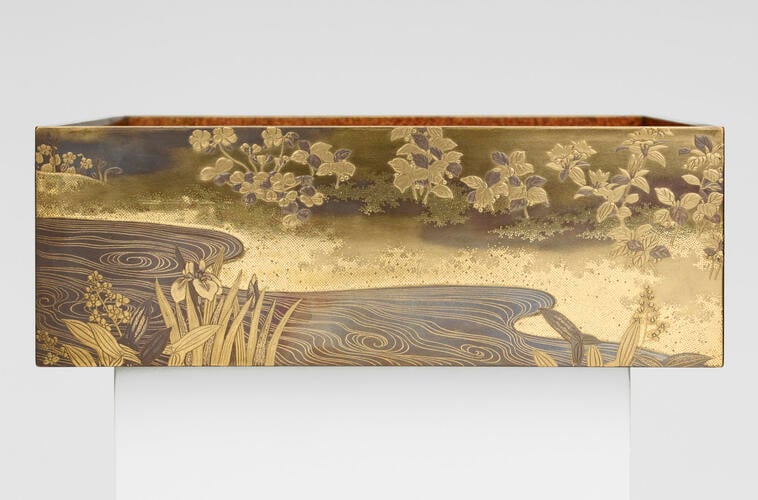

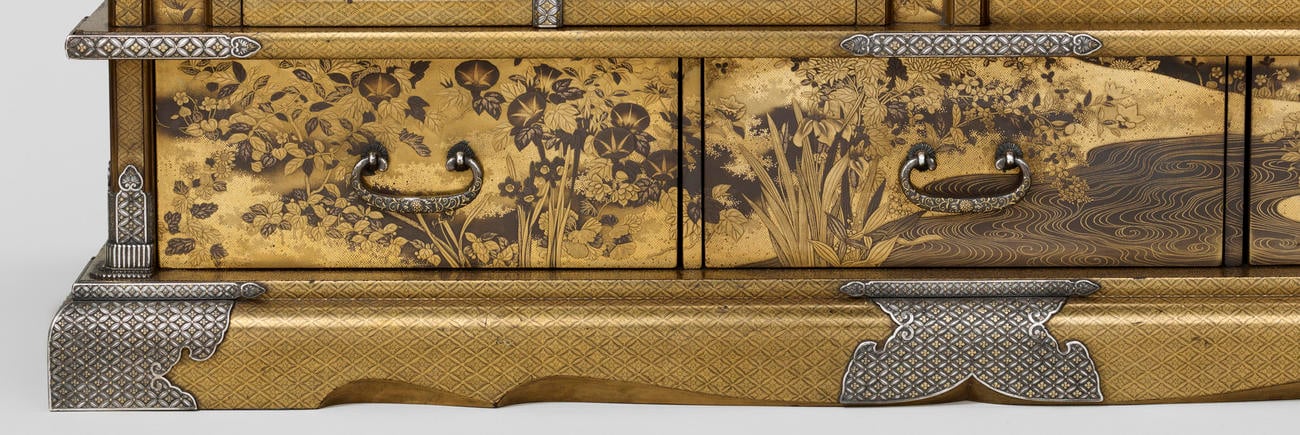


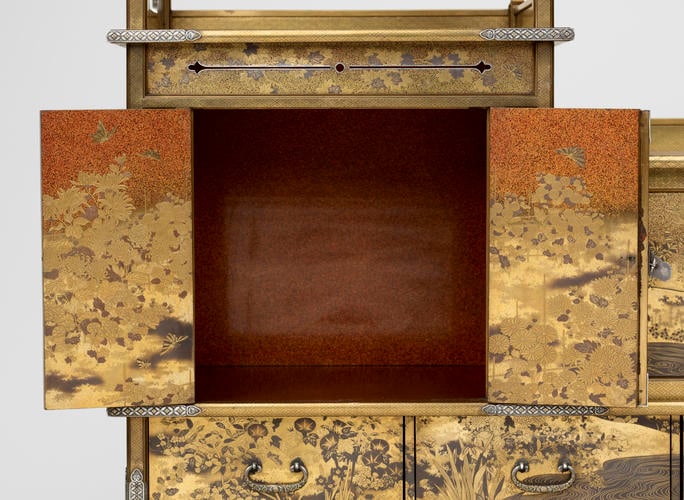

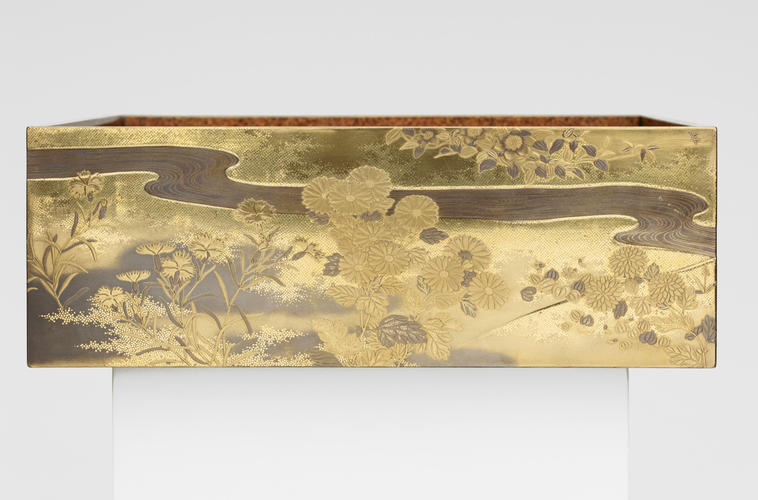
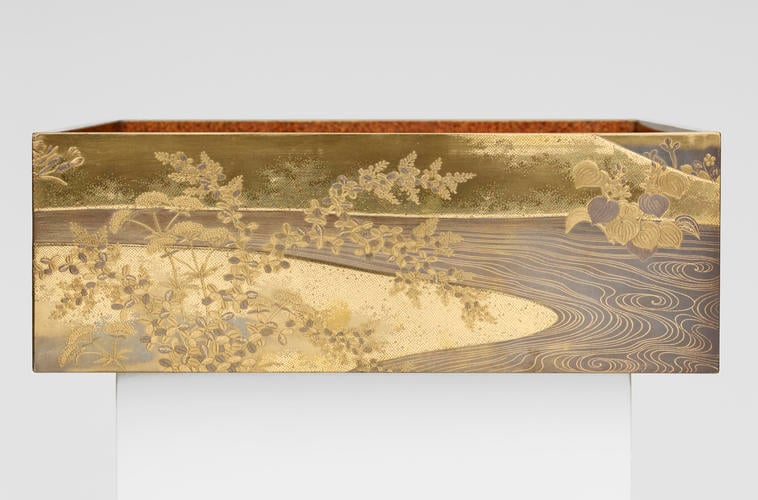
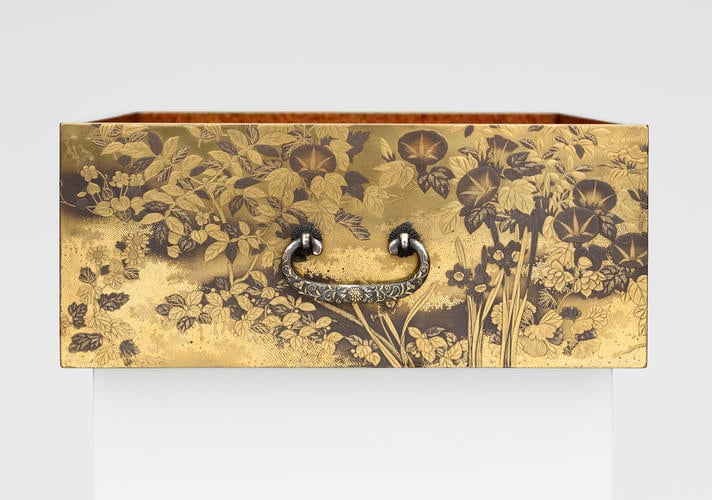
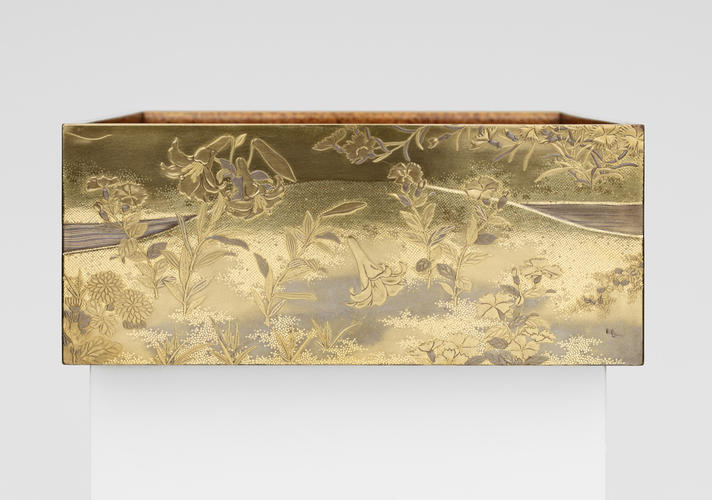
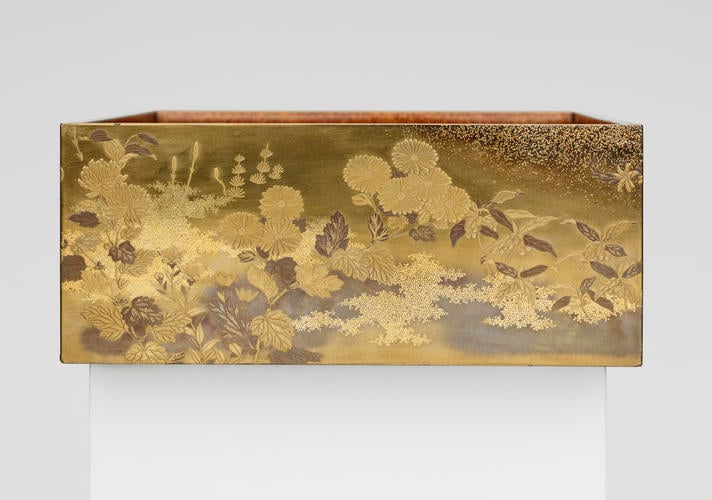
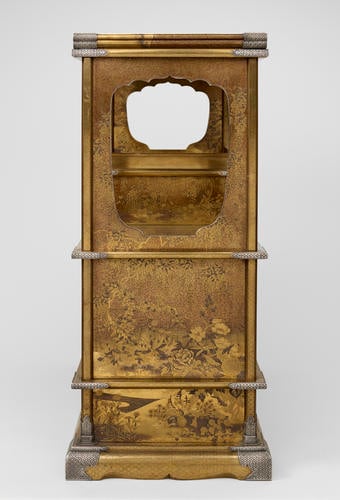
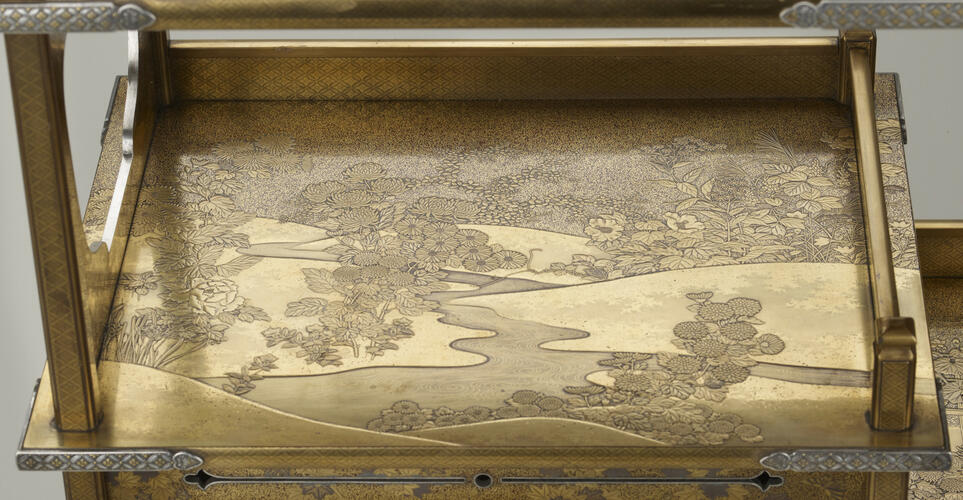


-
Rectangular cabinet with shelves, with a low plinth raised on six shaped feet and with four corner uprights, having three full-length drawers below; on the right above, a recess with a pair of sliding doors, and to the left, a taller cupboard with two doors, the spaces above forming deep shelves, the corner uprights supporting at a higher level a large, flat shelf with raised curving end-pieces like a writing table, both upper sides being pierced with shaped and pointed openings. The doors, with inset panels, having hinges and lock-catches of deeply engraved silver with inlaid studs of gold, similar fittings reinforcing the corners and those of the shelves. The shelves, doors and all four sides of the three drawers, as well as their sides and backs, richly decorated, predominantly on a gold ground, partly in hiramakie, with designs of flowering plants growing by a stream, with widespread use of nashiji on the interior surfaces.
The rich decoration on this gold lacquer cabinet evokes the transition from summer to autumn. Summertime iris, morning glory (asagao) and lilies bloom on the three drawers at the base. They grow by a river which extends onto the sliding panels and two-door cabinet above, where two quails stand surrounded by maple leaves and chrysanthemums. The latter are all associated with September, which is the dominant theme of the design.
Seasonal imagery of this kind has pervaded Japanese art since ancient times. Painters and writers have long used the flora and fauna visible at different months of the year as models of natural beauty, but also as philosophical and emotional cues. Depicting multiple seasons in a single scene, as here, evokes both Buddhist and Shintō ideas about the transience of nature and its cyclical rhythm.
This shodana, a suitably splendid imperial gift, was a present from the Emperor Meiji (1852–1912) for Queen Victoria’s Diamond Jubilee in 1897. It was exhibited in the North Gallery at the Imperial Institute in 1897–8 alongside other Jubilee gifts, including an embroidered screen also sent by the emperor. Both items attracted favourable comment. The Morning Post judged them ‘extremely artistic’ and noted that the cabinet was ‘delicately constructed’. By 1901, it was displayed in the New Wing (Durbar Corridor) at Osborne House on the Isle of Wight. This seaside retreat, one of Queen Victoria’s favourite residences, seems to have been her preferred location for displaying East and South Asian works of art.
Text adapted from Chinese and Japanese Works of Art in the Collection of Her Majesty The Queen: Volume III and Japan: Courts and Culture (2020)
Provenance
Presented to Queen Victoria by Emperor Meiji of Japan (1852-1912) on the occasion of her Diamond Jubilee, 1897. A typed list of Jubilee gifts includes no. 32: ‘From the Emperor of Japan. A Japanese Cabinet’.
Noted in a list of 'Diamond and 1887 Jubilee Presents & Addresses Forwarded to Osborne', n.d. (no. 37)
Recorded in the New Wing (Durbar) Corridor at Osborne House in 1901: 'A Japanese Cabinet fitted with shelf on top; lower part in two compartments and enclosed with folding and sliding doors and three doors beneath; ornamented with views and floral designs in gold lacquer. Height 2 ft. 4 in. x 1 ft 3/4 in. x 2 ft 5 1/2 in. Given to the Queen by the Emperor of Japan, Diamond Jubilee, 1897'.
Recorded in the Privy Purse Corridor at Buckingham Palace in 1911 (BP 1911 IX p.267). -
Creator(s)
(nationality)Acquirer(s)
-
Medium and techniques
Wood, black and gold lacquer, silver fittings inlaid with gold
Measurements
70.6 x 75.5 x 31.0 cm (whole object)
Category
Object type(s)
Place of Production
Japan




